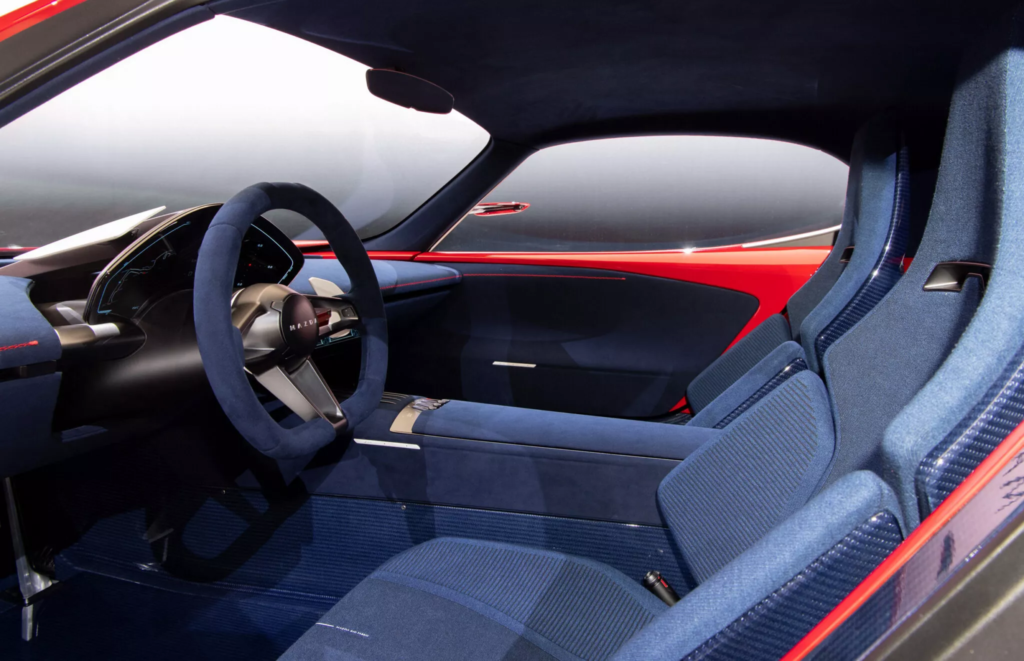Company executives say they must make a solid business case for the sports car before giving the Iconic SP the green light for production
- A new interview with Mazda execs indicates that the Iconic SP sports car is a priority for the brand.
- It has overcome issues with fuel economy and now just needs to make a business case for the car.
- This isn’t the first time that Mazda has heavily hinted that the concept is headed for production.
Mazda made some serious noise when it revealed the Iconic SP. Not only did it look like the truest successor to the FD RX-7 we’d ever seen, but it also measured up at 164.6 inches long (4,180mm), 72.8 inches wide (1,850mm), and 45.3 inches tall (1,150mm), weighing in at 3,196 lbs (1,450 kg). What was even more surprising, though, was that the brand seemed genuinely interested in making it a reality. And now, CEO Masashi Nakayama says there’s just one more thing they need: a solid business case.
More: Mazda’s Next Miata Hides A Big Surprise Under The Hood
The concept first showed up in late 2023, and Mazda hasn’t been able to stop talking about it since. Initially, the plan was to use a two-rotor EV system to power it. By the end of last year, Mazda’s design chief said it would enter production in the “not-so-distant future.” A month after that, Nakayama said it was inching toward production step by step.
Emissions Hurdle Almost Conquered
Now, according to Mazda officials, the company has overcome nearly every major hurdle in getting the Iconic SP ready for production. Speaking with Road & Track, Masashi Nakayama, the general manager of Mazda’s design division, revealed that they’ve made huge progress toward meeting all the technical and regulatory requirements needed to make the car a reality.
“I have to be very careful what I say here,” said Nakayama, “but we made sure that it will be feasible for production.” This also includes meeting emissions regulations, like the LEV IV standards in the USA and Euro 7 for Europe. “We know that rotary is not good at complying with emissions, which was the reason we decided to discontinue it in 2012,” he said. “That is a very high hurdle they have to overcome, but in the last year, the progress has been very encouraging”.

Mazda’s Chief Technical Officer, Ryuichi Umeshita, doubled down on this, stressing the company’s commitment to making the Iconic SP happen. Regarding the rotary engine development, he told the magazine, “Where we are is developing the technology to pass the U.S. regulation, and we have a very good forecast now, so we are almost ready. The next challenge is… now you can support us in making a good business case. But technically, we are almost ready – if we see a good business case, we’re ready to go.”
The Best Cars I’ve Driven #3: Mazda RX-7 FD Spirit R
That’s right, everyone. We’re just one step away from seeing the Iconic SP go into production. All we need to do is ensure Mazda feels confident there are enough buyers to justify the investment. Based on what Umeshita says, it seems the company has really thought this through.
The Rotary Engine Situation
When the Iconic SP concept was first shown, it used a rotary engine as a range extender to keep the battery charged on the go. This setup generated a combined 365 horsepower (272 kW/370 PS), a solid upgrade over the RX-7 and RX-8. But Mazda’s been hinting that the production model might take a different route, possibly switching to a more conventional hybrid setup, as evidenced by talk about a transmission.
Speaking about the gearbox that could go into the Iconic SP (or whatever a production version ends up getting called), Umeshita said: “If, let’s say – and we haven’t decided anything yet – if we do go to the super sports category, then [a gearbox] should be faster then probably not a manual, but a more advanced transmission technology can be used.”
So expect something with flappy paddles, either a dual-clutch transmission in a hybrid or a direct drive if it uses an electric motor to power the wheels.
The Headlights: Do You Even Care?
On the subject of the Iconic SP’s semi-pop-up headlights, Nakayama was asked if Mazda could pull it off. “We can do it in terms of technology,” Nakayama said. “For example, in the current MX-5, there is a deployable bonnet, the hood pops up [in the event of a crash]… but the question is regulation. Of course, if you could support us, we’d love to do it.” Essentially, he’s asking for public support to push the idea over the finish line.
Honestly, I’m quite certain most of us don’t care either way so long as they go on and build the thing.




